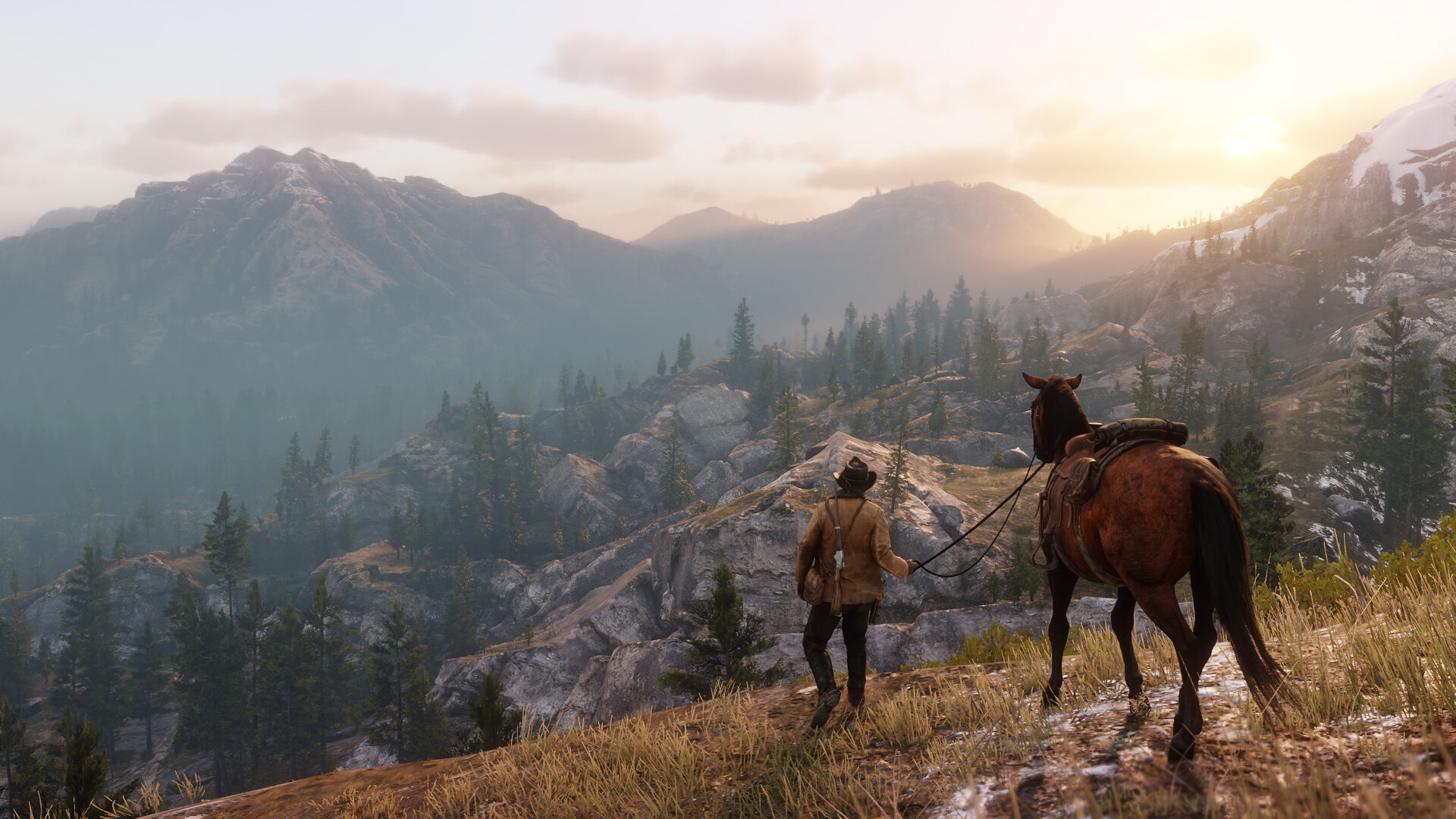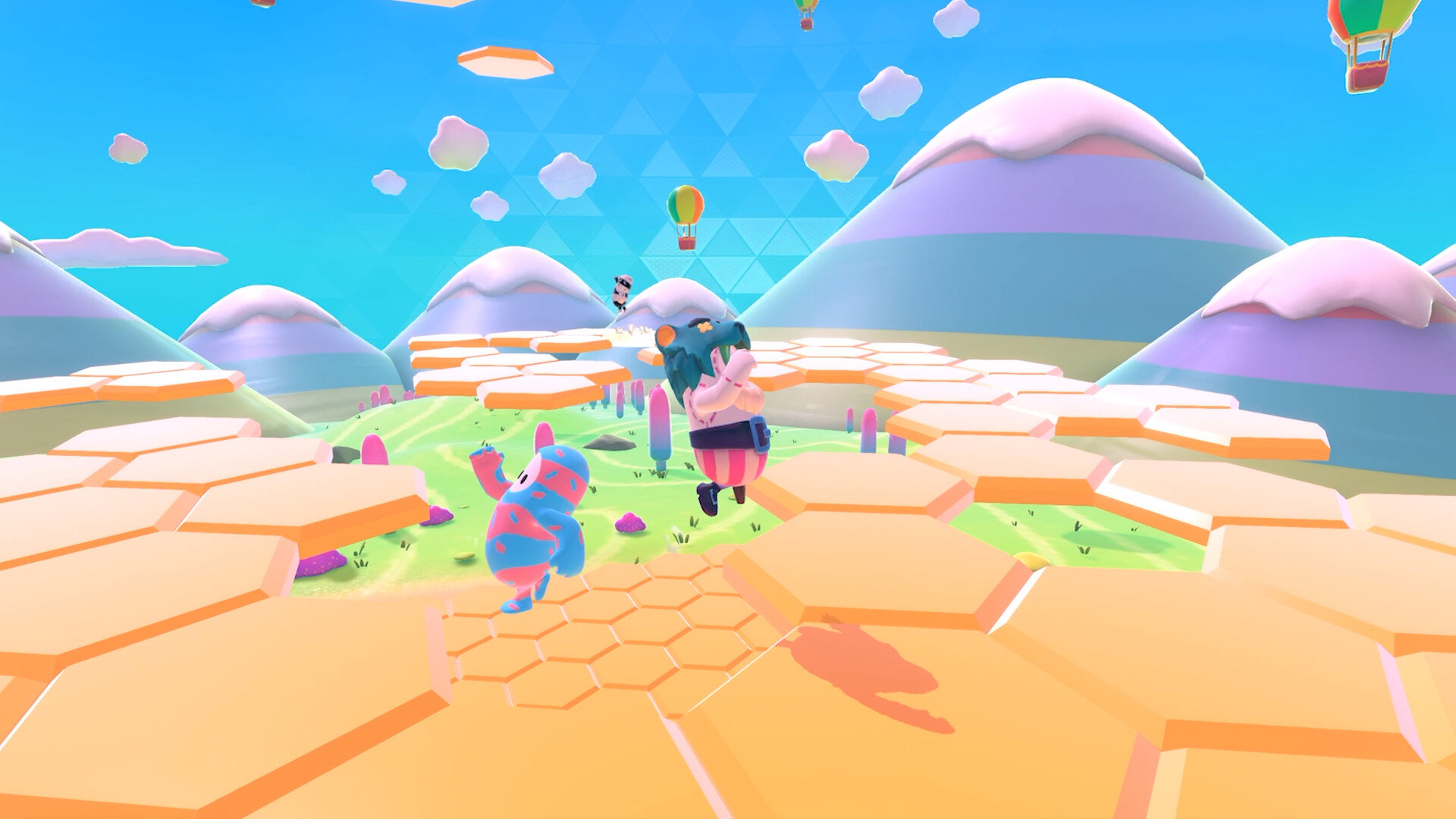Playing Nature: Ecology in Video Games
Juniper Lewis, Guest Contributor
How should we think about nature in video games? The open prairies and mountains of Red Dead Redemption 2 sure feel like nature, but do they count? Can a modeled and rendered tree or elk or sweet potato give a player the same feeling as the real thing? I’ll be honest, I don’t have all the answers, but I do believe that the worlds of video games matter. In Alenda Chang’s 2019 book Playing Nature, she provides language and examples to help us think through these questions and our relationships to games.
Red Dead Redemption 2 (Rockstar North, 2018).
The book itself is an academic analysis of video games from an ecological perspective. That is to say, it’s written by an academic for other academics who want to know what ecologists and a nature-centric approach can tell us about video games as pieces of media. Chang looks at a variety of games, from Neko Atsume, a cat collecting mobile game, to the Katamari series, a collection of stuff-gathering and world-destroying puzzle games. In order to look at nature in a variety of games Chang borrows a term from ecology: mesocosms.
Mesocosms are, she explains, “experimental enclosures intermediate in size and complexity” that allow scientists to recreate naturally existing environments in spaces that they can have more control over. These, metaphorically, walled off spaces are imperfect replications of the nature outside of them, but they give researchers space to try experiments that would be difficult if not impossible to test in the wild. Chang argues that we should think about video games as mesocosms: human-made replicas of natural spaces that allow people to try, fail, and play.
Stardew Valley (ConcernedApe, 2016).
Throughout Playing Nature Chang puts the lens of mesocosms into action by analyzing a variety of nature-related games. She discusses how Stardew Valley, my favorite game, uses its awareness of farming game tropes to create a farm simulator that allows players to experience nature in a multitude of ways. Of course, like any mesocosm, the virtual nature of Stardew is purposefully inaccurate. You never have to worry about your crops becoming diseased or mucking your cow’s barns, you can just enjoy the pleasure of cultivating the land and slaying monsters in the local mine. And while the game encourages players to explore all of its options, it’s possible to have a great time and make a living without ever hoeing a row. Players can fish, mine, or forage to survive. The environment of the game world isn’t just a backdrop, it is the game.
Firewatch (Campo Santo, 2016).
One of Chang’s other striking focuses is the interaction between in-game environments and real world ones. She looks at how the alternate-reality game Black Cloud used actual sensors to monitor air quality, helping players understand the causes and effects of pollution on people with asthma. Games can be used to address real world concerns like pollution, climate change, and even plant literacy. When we think about nature and video games, it’s not enough to just look at the nature in the games, we also need to look at all the nature that goes into and is affected by games. Chang urges readers to think not just about the games they play but about the cables, electricity, and human labor that go into making video games possible. Video games, like any good mesocosm, can teach us not only about the world in the experimental bubble but also about the life surrounding it.
My only real frustration with the book is that I wish it was about a hundred pages longer. This is, of course, not really her fault as much as it is about limits on research time and page counts. One key example of the limitations this book runs up against is that Chang only looks at games that already have a strong nature theme. I want to take a moment to think about what Chang’s ideas of mesocosms and the importance of looking at nature broadly look like when applied to a video game that’s removed from a natural environment. To do this, let’s look at Fall Guys, a game where you play as a large bean-like character wearing a mascot-like costume and compete against other mascot-wearing beans in a variety of challenges of speed and agility.
Fall Guys (Mediatonic, 2020).
The world of Fall Guys is sterile, but in a fun way. Player characters are the only living and moving thing - except for the occasional giant fruit that gets shot across the field. It’s unclear if the pink goo is alive, but that, in my professional opinion, is a horrible thought. Fall Guys is a game wrapped up in many layers of pop culture that are easy to see: players can dress as characters from other games and as well known Twitch streamers and levels are often inspired by real life game shows. But how does Fall Guys function as a mesocosm? It doesn’t seem to be imitating a naturally-occurring space, but does the game still mobilize nature to allow people to try, fail, and play?
One of the key features of Fall Guys that we can examine with the tools that Chang has given us are the costumes. Even without the typical features of a nature/naturalistic game, Fall Guys still presents a space that players can recognize and have fun in. The mascot-like costumes are an important part of how the game takes otherwise alien bean-shaped beings and turns them into adorable squishy friends. While some of the costumes are of inanimate objects, like a can of soda, many are of animals or people, like a parrot or a witch. Nature, in this case the people and creatures of our world, become part of the show. Importantly, these costumes and the variety of ways a character can be dressed up and decorated demonstrate the other key feature of Chang’s book: the world outside of the game and the world of the game matter to each other and impact each other. It’s easy to forget that humans are a part of nature too. In Fall Guys, it’s the people playing the game with other people, as well as the humans who play the games inspiring Fall Guys, who make the game so clearly a part of nature.
Fall Guys (Mediatonic, 2020).
Although Alenda Chang focuses her analysis on games that already have a strong nature theme, her book Playing Nature lends itself to being a useful analysis for non-nature video games. The idea of mesocosms makes moot the question of “real nature,” instead enabling us to think about the ways that game natures and IRL natures interact and shape one another. Finding joy and solace in the nature of video games is, at times, not so different from sitting on a park bench - both are human made spaces designed for play and for trying new things. Even Fall Guys, a game with no grass, water, or animals running around, can be seen as a mesocosm, a playground full of costumed creatures. Nature in video games, just like the nature outdoors, matters.







